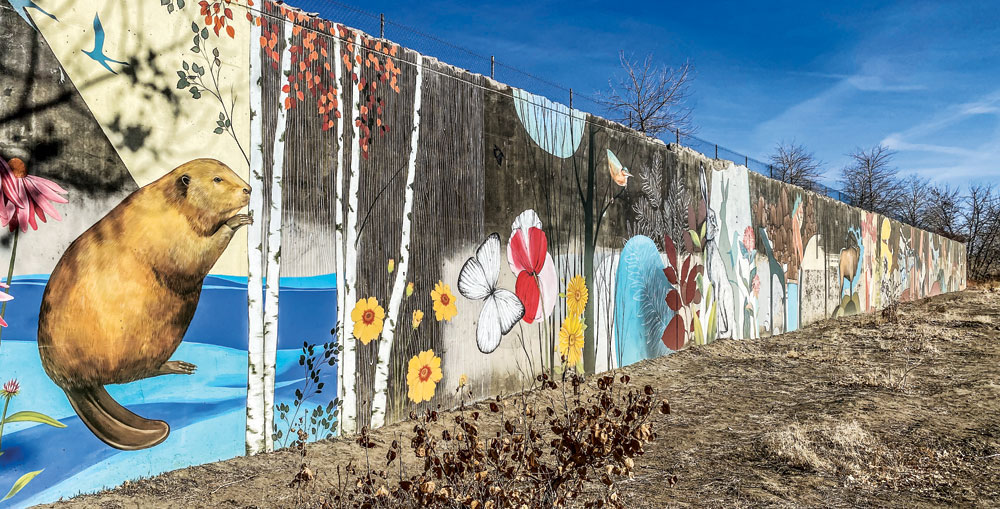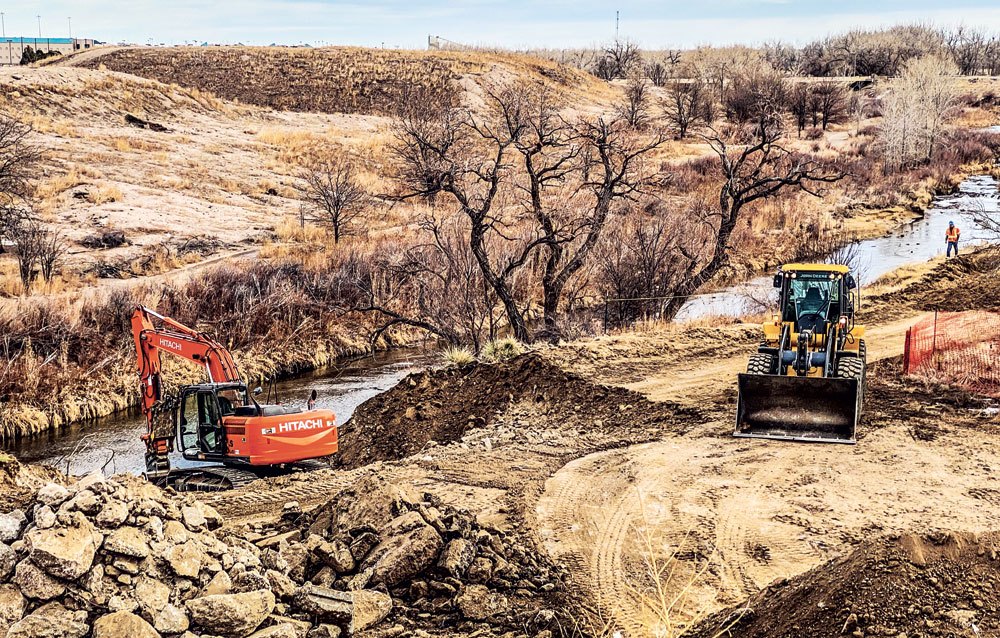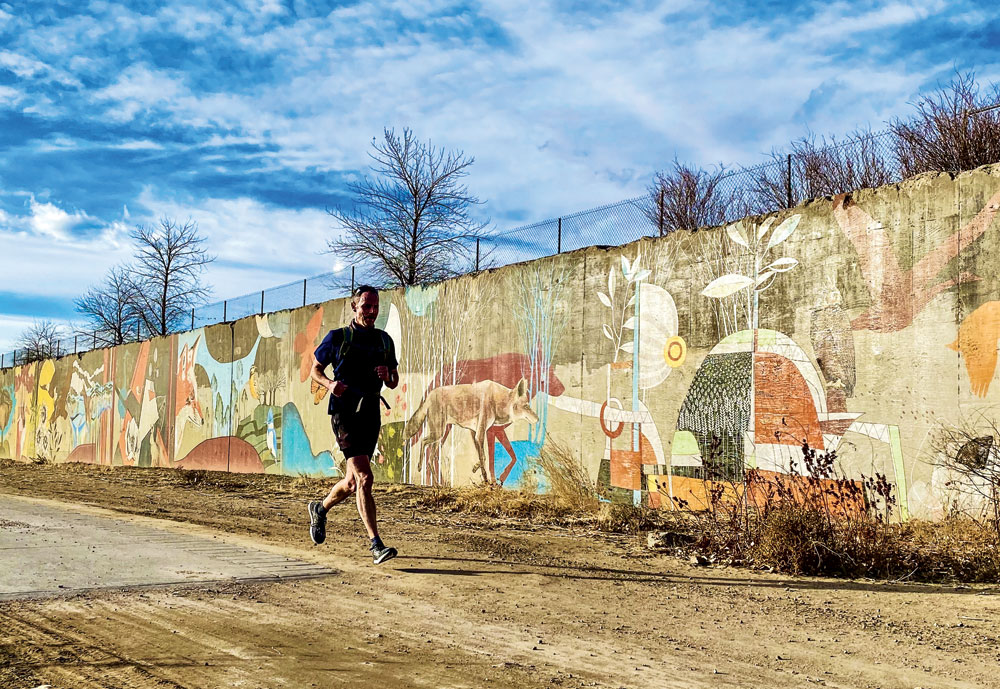
When a grant for the 275-foot mural along the Sand Creek trail was withdrawn due to the pandemic, the non-profit Sand Creek Greenway Partnership raised funds to make it happen.
- By fall cyclists will be able to enjoy a 12-foot wide concrete trail that connects the 14-mile long Sand Creek Greenway to the High Line Canal trail in Aurora and to the South Platte River trail in Commerce City.
- A massive stretch of concrete that used to support a runway over I-70 now celebrates wildlife along Sand Creek Greenway with a 275-foot mural whimsically depicting the species that have made a home there since the airport moved: foxes, beavers, bald eagles, deer – even an elk that has appeared in the eastern portion of the Greenway.
- A mountain of trash and debris that littered the steep bank of Sand Creek just west of Havana has been cleaned up, creating a peaceful and natural stretch of the stream where mallards “dabble” with their green heads down and their bottoms up as they graze on underwater plants.
Sand Creek Greenway is being transformed from a creek that used to hide under airport infrastructure to a gem of nature and recreation in the city.
An upgraded trail for cyclists—Paving of the trail on the north side of Sand Creek will begin in late February and is expected to be completed by fall. The concrete trail will be 12-feet wide, with a 4-foot crusher fine path at its edge. The Sand Creek trail project includes adding a paved parking lot and a formalized trailhead near the confluence of Sand Creek and Westerly Creek. “Our hope is that in the future we can get some additional funding to build restrooms there as well,” says Denver Parks and Recreation’s Cincere Eades. The $3.5 million dollar project was funded by 2018 bond tax initiative approved by Denver voters to expand and improve parks and open spaces in the city.

With heavier use of trails and open space during the pandemic, Denver Parks and Rec determined that the mountain of debris from the old Stapleton airport was a safety hazard and committed $500,000 to clean up steep bank just west of Havana.
Art and nature—The 275-foot mural is just west of the parking area at the confluence of the two creeks. It was funded by the non-profit Sand Creek Regional Greenway Partnership. Executive director Beth Nobles said originally 50% of the mural’s $23,000 installation and maintenance costs were to be funded by Denver Arts and Venues, but because of the pandemic, the grant was withdrawn. “Our board decided that in times like these, the community can be elevated and energized by doing something good. Art…can build community. The board said to go ahead and raise the money—and we did,” said Nobles.
Created by Lakewood artist Yulia Avgustinovich, Nobles says she loves how the painting incorporates wildlife while allowing the gritty industrial wall to show through. “It really encapsulates our notion of wildlife in the city. People love this mural. They have cheered us for getting this project started and I think there will be a lot of support for future projects to really make this an arts destination,” says Nobles.

A runner along the Sand Creek trail passes the new mural just west of the confluence of Westerly Creek and Sand Creek. If you haven’t visited the Sand Creek Trail recently, it’s time to get out and enjoy the improvements that offer something for cyclists, for runners, and for those who simply want to walk quietly along the creek.
A safer and more natural habitat—The pandemic, surprisingly, was an incentive to get the cleanup done. “With the increased use of the trails during the pandemic, we felt we needed to remove those materials (concrete, metal and other debris) for safety reasons,” says Eades. Much of the debris came from the airport runways that covered Sand Creek and Westerly Creek. In addition to removing debris from the banks and waters of Sand Creek, the $500,000 project by Denver Parks and Recreation and the Mile High Flood District will stabilize the creek banks and restore some of the topography that was damaged from unauthorized BMX bike trails that had been created in the area. “That kind of bike use destroys the vegetation and leads to erosion, so we are always trying to educate the public and do outreach about why it’s so important to stay on designated trails,” said Morgan Lynch with the Mile High Flood District.


I’m an amateur photographer, and I’m looking forward to exploring this part of the trail. Just waiting on Mother Nature to warm our temperatures up again.